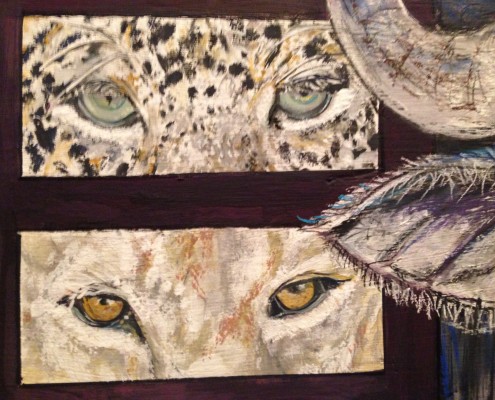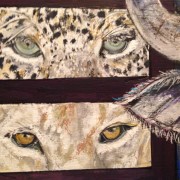The Eyes of the Leopard and Lion
The Eyes of the Leopard and Lion
The Leopard and Lion are [part of the Big 5 African Wildlife and herewith most interesting facts about the eyes of these cats.
LEOPARDS
Natgeotv writes that Leopards have fewer colour-detecting cones in their eyes than humans, and thus see fewer colours humans. It is a myth that mammals only see in black and white, although they rely less on colour differentiation. Large numbers of light-sensitive cells in the eyes that do not detect colour allow Leopards to detect movement and shape specifically predators at night. South Africa National Biodiversity Institute explains that Leopards have large eyes, which provide them with a binocular vision to determine distance accurately. The large pupils of the eyes allow abundant light to enter, making it possible to see during dark nights. The narrow white line found below the eyes of Leopards helps reflect light into the eyes for improved night vision. Eco Travel writes that when stalking, they crouch with their body held close to the ground and the tail horizontal, while they locate the prey primarily using their acute night vision, freezing whenever the prey looks around alertly: then they burst out with a focused fury. Leopards are totally adapted for hunting: they have close-set eyes for binocular vision, so they can accurately judge distances, and they often observe prey from a high vantage point before beginning their painstaking stalk A leopard’s night vision is up to 7 or 8 times better than a human’s, and its hearing is up to 5 times better. Leopards are born with their eyes shut to protect against sunlight and prevent cubs from wandering. Within two weeks their eyes are open (Natgeotv).
LIONS
Lions have terrific night vision. They are 6 times more sensitive to light than humans. This gives them a distinct advantage over some prey species when hunting at night (One kind). Lionalert reports that Lion cubs are born with blue eyes that change to amber or brown when aged two to three months. The eyes are proportionally larger than in comparable-sized animals and have round pupils. Lions have a second eyelid,  which can be drawn over to clean and protect the eye. A reflective coating at the back of the eye reflects even moonlight, making their eyes appear to glow red in the dark. The coating gives lions sight eight times better than a human at night. A white circle below the eye helps reflect light into the eyes. Lions have round pupils instead of vertical slits, as are found in domestic cats. The round pupil at night also allows more light to filter into the eye, giving the lion better night vision. Like most cats, lions have limited ability to move their eyes from side to side and must move their head to look in a different direction.
which can be drawn over to clean and protect the eye. A reflective coating at the back of the eye reflects even moonlight, making their eyes appear to glow red in the dark. The coating gives lions sight eight times better than a human at night. A white circle below the eye helps reflect light into the eyes. Lions have round pupils instead of vertical slits, as are found in domestic cats. The round pupil at night also allows more light to filter into the eye, giving the lion better night vision. Like most cats, lions have limited ability to move their eyes from side to side and must move their head to look in a different direction.


